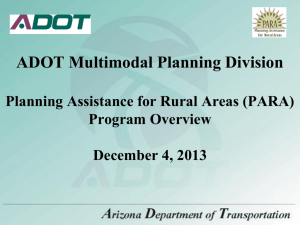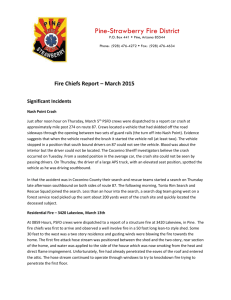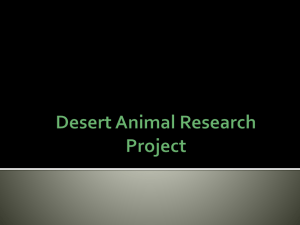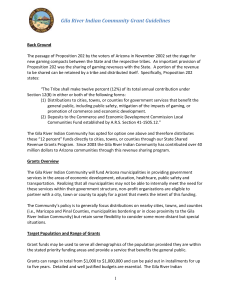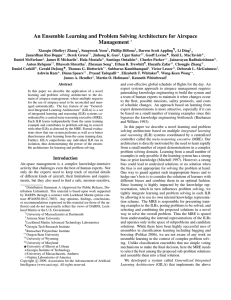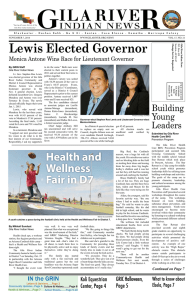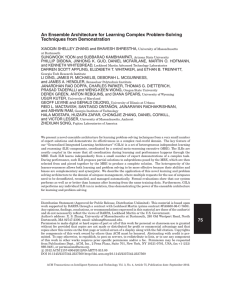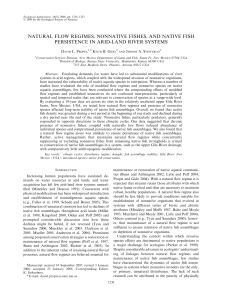Multi-Purpose Development of the Gila Drain Floodway
advertisement
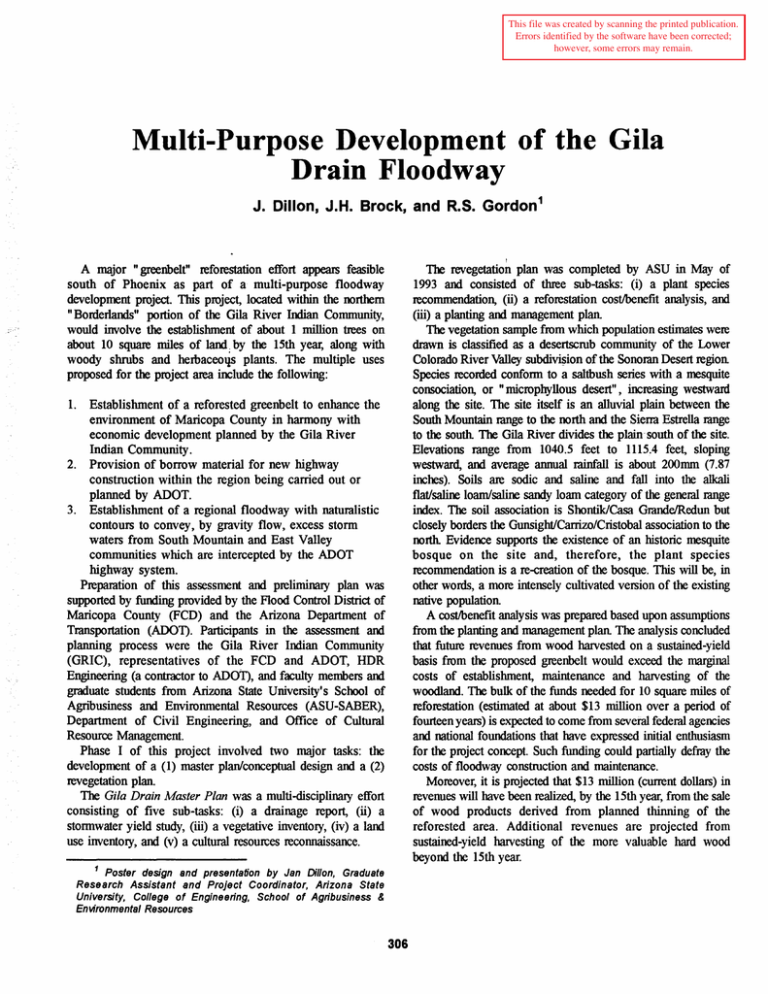
This file was created by scanning the printed publication. Errors identified by the software have been corrected; however, some errors may remain. Multi-Purpose Development of the Gila Drain Floodway J. Dillon, J.H. Brock, and R.S. Gordon 1 I The revegetation plan was completed by ASU in May of 1993 and consisted of three sub-tasks: (i) a plant species recommendation, (ii) a reforestation costlbenefit analysis, and (iii) a planting and management plan The vegetation sample from which population estimates were drawn is classified as a desertscrub community of the Lower Colorado River Valley subdivi~ion of the Sonoran Desert region Species recorded conform to a saltbush series with a mesquite consociation, or "microphyllous desert", increasing westward along the site. The site itself is an alluvial plain between the South Mountain range to the north and the Sierra Estrella range to the south. The Gila River divides the plain' south of the site. Elevations range from 1040.5 feet to 1115.4 feet, sloping westward, and average annual rainfall is about 200mm (7.87 inches). Soils are sodic and saline and fall into the alkali flat/saline loam/saline sandy loam categoty of the general range index. The soil association is Shontik/Casa GrandelRedun but closely borders the GunsightlCarrizo/Cristobal association to the north. Evidence supports the existence of an historic mesquite bosque on the site and, therefore, the plant species recommendation is a re-creation of the bosque. This will be, in other words, a more intensely cultivated version of the existing native population A cost/benefit analysis was prepared based upon assumptions from the planting and management plan The analysis concluded that future revenues from wood harvested on a sustained-yield basis from the proposed greenbelt would exceed the marginal costs of establishment, maintenance and harvesting of the woodland. The bulk of the funds needed for 10 square miles of reforestation (estimated at about $13 million over a period of fourteen years) is expected to come from several federal agencies and national foundations that have expressed initial enthusiasm for the project concept. Such funding could partially defray the costs of floodway construction and maintenance. Moreover, it is projected that $13 million (current dollars) in revenues will have been realized, by the 15th year, from the sale of wood products derived from planned thinning of the reforested area. Additional revenues are projected from sustained-yield hatvesting of the more valuable hard wood beyond the 15th year. A major "greenbelt" reforestation effort appears feasible south of Phoenix as part of a mUlti-purpose floodway development project This project, located within the northern " Borderlands" portion of the Gila River Indian Community, would involve the establishment of about 1 million trees on about 10 square miles of land. by the 15th year, along with woody shrubs and herbaceoqs plants. The multiple uses proposed for the project area include the following: 1. Establishment of a reforested greenbelt to enhance the environment of Maricopa County in harmony with economic development planned by the Gila River Indian Community. 2. Provision of borrow material for new highway construction within the region being carried out or planned by ADOT. 3. Establishment of a regional floodway with naturalistic contours to convey, by gravity flow, excess storm waters from South Mountain and East Valley communities which are intercepted by the ADOT highway system. Preparation of this assessment and preliminaty plan was supported by funding provided by the Flood Control District of Maricopa County (FCD) and the Arizona Department of TI3DSportation (AD01). Participants in the assessment and planning process were the Gila River Indian Community (GRIC), representatives of the FCD and ADOT, HDR Engineering (a contractor to ADOt), and faculty members and graduate students from Arizona State University's School of Agnbusiness and Environmental Resources (ASU-SABER), Department of Civil Engineering, and Office of Cultural Resource Management. Phase I of this project involved two major tasks: the development of a (1) master plan/conceptual design and a (2) revegetation plan. The Gila Drain Master Plan was a multi-disciplinary effort consisting of five sub-tasks: (i) a drainage report, (ii) a stormwater yield study, (iii) a vegetative inventOlY, (iv) a land use inventoty, and (v) a cultural resources reconnaissance. 1 Poster design and presentation by Jan Dillon, Graduate Research Assistant and Project Coordinator, Arizona State University, College of Engineering, School of Agribusiness & Environmental Resources 306


